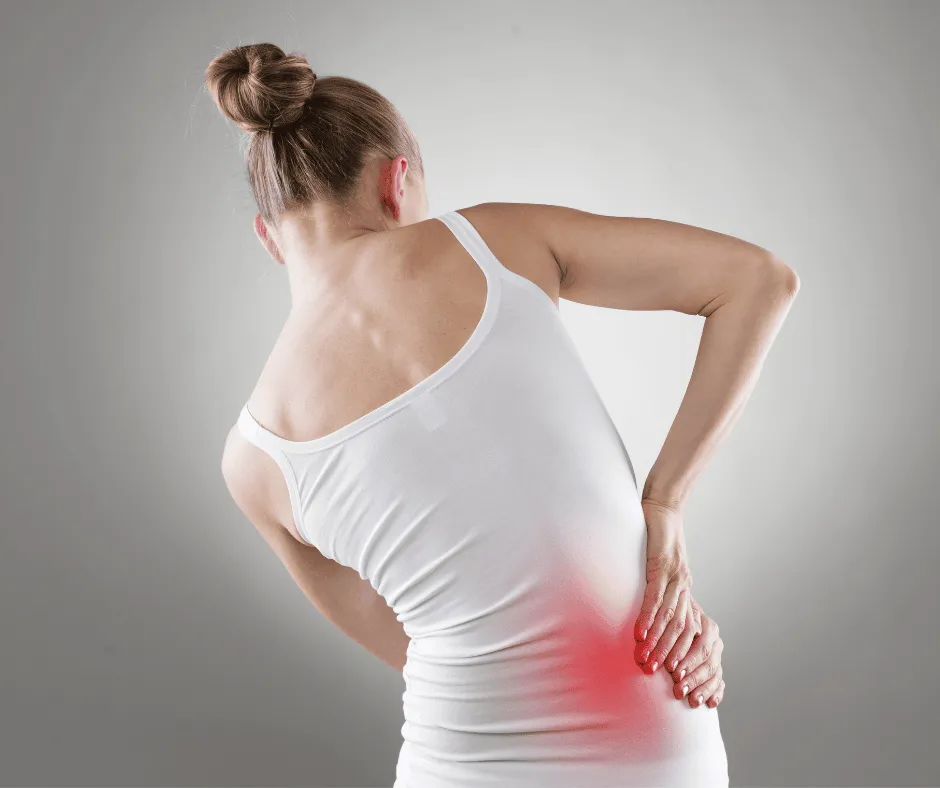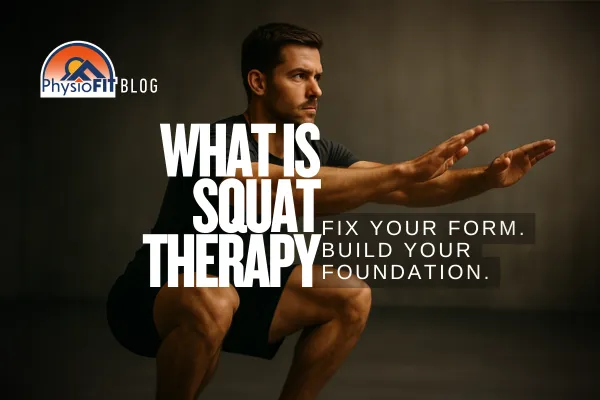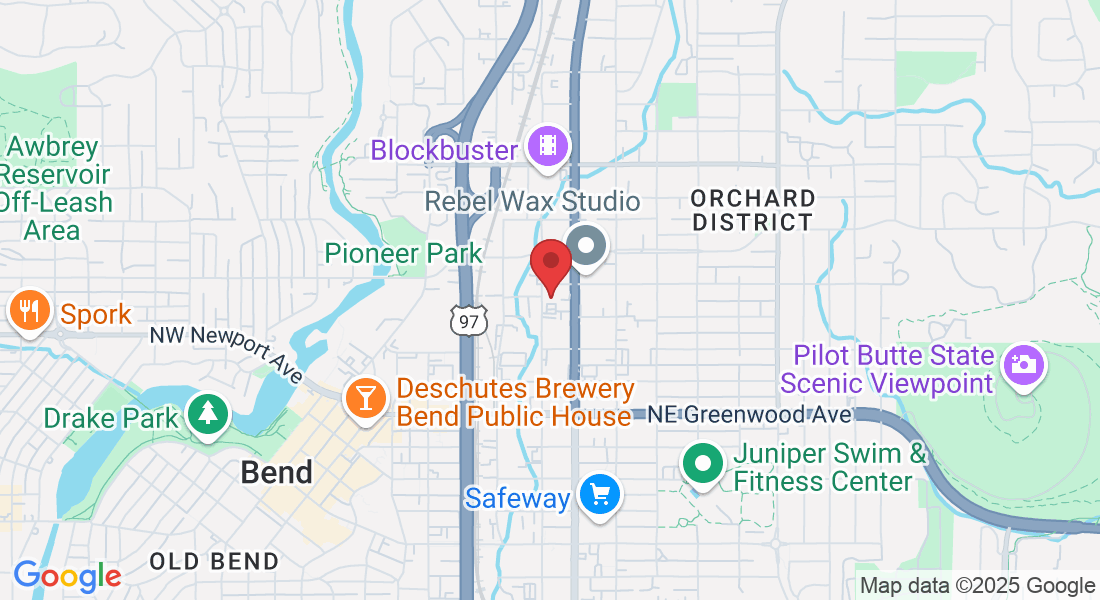Hip Pain Relief
Rediscover a Life Untroubled by Hip Pain
Diagnosing hip discomfort can be complex due to the joint's multifaceted connection to bones, muscles, ligaments, and other tissues. Pain in the groin or inner hip may signal an issue within the hip, while discomfort in the upper thigh, outer buttock, or hip's outer area often implicates surrounding soft tissues. Sometimes, what appears as hip pain may actually originate from elsewhere, like the lower back.
At PhysioFit, we're dedicated to providing specialized hip pain solutions, individually tailored to meet the unique needs and conditions of each patient. We apply a scientific, fitness-oriented approach to physical therapy, focusing on personalized care paths towards relief. Our mission goes beyond just easing your hip pain; we aim to improve your overall well-being, mitigate the risk of persistent or long-lasting discomfort, and facilitate a quick recovery to your regular activities.
What You Should Know
The hip, a sturdy ball-and-socket joint, enables a wide range of movement. The ball, at the top of your thigh bone, fits neatly into a hollow socket in your pelvis, contributing to the joint's impressive mobility.
A network of muscles and tendons encase the hip joint, forming a protective capsule. This support system bolsters joint movement and contributes to leg and upper body motion.
The synovium within the capsule lubricates the joint with synovial fluid and sustains the cartilage health. This cartilage buffers the hip joint bones, minimizing friction and impact during motion. This well-structured support mitigates hip dislocation, even during high-impact injury scenarios.
A proper diagnosis of a hip problem involves a thorough evaluation from a professional.

What Really Causes Hip Pain?
The cause of hip pain can vary considerably, stemming from various injuries or health conditions. The nature and severity of the pain often offers clues to its underlying cause.
Tendonitis - Inflamed Tendons: The most frequently encountered source of acute hip pain is inflamed tendons, known as tendonitis. This inflammation generally results from excessive physical activity and while it can be quite painful, it typically subsides within a few days.
Arthritis - A Persistent Pain Culprit: Long-term hip pain is predominantly caused by arthritis, a condition characterized by painful, stiff, and tender joints that can impede normal mobility. Several forms of arthritis can affect the hip:
Osteoarthritis (OA): The wearing down of protective joint cartilage due to age or use often results in osteoarthritis.
Traumatic Arthritis: A joint injury, like a fracture, may trigger this condition, which mirrors osteoarthritis.
Infectious Arthritis: This occurs when an infection in the joint leads to cartilage destruction.
Rheumatoid Arthritis (RA): This autoimmune condition, where the body's immune system attacks the joints, may cause extensive damage to joint cartilage and bones over time.
Of these, osteoarthritis is far more prevalent than rheumatoid arthritis.
Trochanteric Bursitis - Inflammation Near the Hip Joint: Hip pain may also be attributed to trochanteric bursitis, a condition that arises when the bursa, a fluid-filled sac near the hip joint, becomes inflamed. This inflammation can be triggered by hip injury, joint overuse, or postural issues. Moreover, other conditions such as RA can also lead to hip pain, with women being more prone to this condition.
Hip Fractures - Sudden, Severe Hip Pain: Hip fractures, often seen in older adults or individuals suffering from osteoporosis (a condition that weakens bones), present as sudden, intense hip pain. They necessitate immediate medical attention due to potential complications, such as leg blood clots.
A hip fracture usually demands surgical intervention followed by physical therapy to aid recovery and restore normal mobility.
If any of this information resonates with your current situation, we urge you to schedule an appointment with us immediately. Don't let hip pain diminish your life quality - allow us to help you embark on the path to relief today.
Safeguarding Your Hips: Essential Tips to Prevent a Hip Injury
Your hip, a critical joint supporting your body weight during movements, requires utmost care for a pain-free life. By adopting certain habits, you can reduce wear and tear, minimize osteoarthritis risk - a leading cause of hip replacement - and uphold a high-quality life. Here are concise yet insightful tips to keep your hips injury-free:
Healthy Weight Maintenance: It's vital to maintain a weight within a healthy range. The hip bears forces up to 3-6 times body weight, meaning reduced weight equals less pain. Balance regular exercise with a nutritious diet to keep joints healthy.
Good Posture: Your everyday posture significantly impacts your joints. Develop habits like sitting with straight back, feet flat, legs uncrossed, and evenly distributing weight while standing to minimize stress on your hip joints.
Sleep Posture: Optimize your sleeping position to alleviate joint stress. If you're a side sleeper, try using pillows between knees or under your hip for support. Back sleepers should put a pillow under the knees for better spine alignment.
Comfortable Footwear: Wear shoes with proper cushioning and arch support to absorb shocks and reduce joint strain. Seek advice from footwear experts if in doubt.
Proper Warm-Up and Stretching: Prioritize warming up before exercise and stretching afterwards to boost blood flow and flexibility, reducing hip injury risk.
Resistance Training: Add functional resistance exercises like squats, lunges, and step-ups to your routine twice or thrice a week to enhance hip and leg muscle strength, promoting hip stability and reducing osteoarthritis risk.
Modify Exercises: Adapt your workout regime as you age. Vary activities to avoid repetitive injuries and consider isometric exercises if regular movements cause pain. Listen to your body and adjust accordingly.
By integrating these tips into your lifestyle, you're more likely to maintain healthy hips and avoid surgical interventions.

Common Symptoms of Hip Pain
Presence of inflammation or a reddish hue in your hip
Discomfort in your groin, buttocks, or thigh area
Sensing rigidity when mobilizing your hip
Challenges in maneuvering your hip
Experiencing intense pain radiating down one side of your body (from the buttock extending down the leg)
Experiencing a clicking, snatching, popping, or scraping feeling in your hip
Remember, if you resonate with any of the symptoms or conditions mentioned, we highly recommend making an appointment with us for a thorough evaluation and personalized treatment plan.
Please Note: The information provided on our website is intended for general education and is not a substitute for professional medical advice. Each individual's situation and body is different. Therefore, what may work for one person may not work for another. We care about your well-being and advise you to reach out to us to discuss your specific needs before implementing any advice from our website.
Your Source for All Things Physical Therapy in Bend Oregon
The PhysioBlog

What Is Squat Therapy?
What is Squat Therapy?
Squat therapy is a focused training method designed to improve the motor control, posture, and mechanics of an individual’s squat. It is especially beneficial for those with immature squat patterns or poor squat mechanics. By using specific drills and feedback, squat therapy helps clients refine their movement patterns, enhancing stability, mobility, and overall performance.
Why is Squat Therapy Important?
The squat is a foundational movement in fitness and daily life, engaging multiple muscle groups and promoting functional strength. However, not everyone performs squats with optimal technique. Poor squat mechanics can lead to discomfort, inefficient movement, or even injury over time. Squat therapy addresses these issues by identifying and correcting faulty movement patterns, ensuring safer and more effective squatting.
Who Can Benefit from Squat Therapy?
You might benefit from squat therapy if:
Your air squat looks off: If your bodyweight squat (air squat) lacks depth, control, or symmetry, it could indicate deficiencies in mobility, stability, or motor control.
Your squat improves with load: Some individuals exhibit poor mechanics during bodyweight squats but demonstrate improved form when adding weight. This could suggest a lack of proprioception or engagement during lighter, unloaded movements.
Common issues observed:
Knees caving inward (valgus collapse)
Limited range of motion (e.g., shallow depth)
Poor balance or excessive forward lean
Lack of coordination or control
How Does Squat Therapy Work?
Squat therapy involves a combination of drills, cues, and tools to address deficiencies and retrain proper movement patterns. Key elements include:
Assessment:
Begin with observing the air squat. Look for common faults such as limited depth, instability, or asymmetry.
Compare the air squat to a loaded squat to identify discrepancies in mechanics.
Corrective Drills:
Wall squats: Perform squats facing a wall to encourage upright posture and proper knee tracking.
Box squats: Use a box or bench to guide depth and reinforce control.
Tempo squats to a target (our favorite!): refers to a squat drill where the individual performs squats at a controlled pace (tempo) while aiming to reach a specific target, such as a box, bench, or marker.
Controlled Tempo: The movement is intentionally slowed down, often broken into phases like a 3-second descent, a brief pause at the bottom, and a 1-second ascent. This slows the motion to enhance muscle engagement and motor control.
Targeted Depth: The target ensures consistency in squat depth, helping individuals practice reaching an ideal range of motion without collapsing or losing form.
Why It's a Favorite: This drill is versatile and addresses multiple issues, including depth consistency, posture, and strength. It also provides immediate feedback, as missing the target indicates a loss of control or improper technique.
Cueing and Feedback:
Use verbal or tactile cues to guide proper alignment and engagement.
Record and review videos to provide visual feedback on progress.
Recognizing Progress
As you work through squat therapy, improvements might include:
Increased squat depth without sacrificing posture or control
Improved knee tracking and stability
Greater confidence and comfort in the squat movement
Enhanced ability to transition these improvements to loaded movements
Final Thoughts
Squat therapy is an invaluable tool for anyone struggling with poor squat mechanics. Whether you’re a beginner looking to build a solid foundation or an experienced lifter aiming to refine your technique, this approach ensures that your squats are safe, efficient, and effective. By dedicating time to perfecting the fundamentals, you’ll set yourself up for long-term success in fitness and beyond.
Copyright PhysioFIT 2025 . All rights reserved


